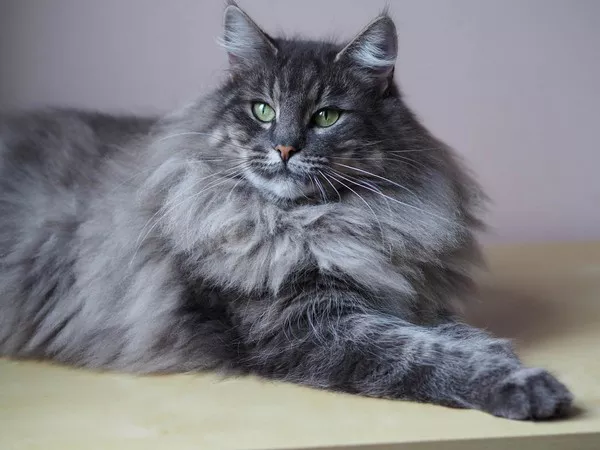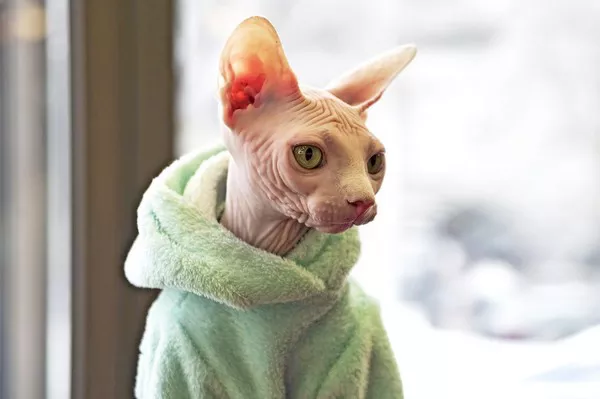Welcoming a Norwegian Forest Cat into your home introduces you to a majestic feline with a heritage deeply rooted in the cold forests of Norway. These cats boast a double coat, tufted ears, and a robust build, all contributing to their resilience in colder climates. As a responsible pet owner, it’s crucial to comprehend the nuances of their cold tolerance and provide an environment that ensures their comfort and well-being during winter. In this extensive exploration, we will delve into the factors that influence a Norwegian Forest Cat’s tolerance to cold weather, signs indicating they might be too cold, and practical tips to safeguard their warmth and happiness.
Understanding the Cold Tolerance of Norwegian Forest Cats
Natural Adaptations
Norwegian Forest Cats come equipped with a remarkable double coat—a waterproof outer layer and an insulating undercoat. This unique fur structure not only provides protection against the elements but also reflects their adaptation to the challenging weather conditions of their native land.
Origin and Heritage
Originating from Norway, these cats have a genetic makeup finely tuned to colder climates. Their ancestors navigated the harsh winters of the Norwegian forests, passing down traits that enable them to thrive in cooler temperatures compared to many other cat breeds.
Factors Influencing Cold Tolerance
Temperature Range
Norwegian Forest Cats generally remain comfortable in temperatures ranging from 45°F to 70°F (7°C to 21°C). However, their ability to tolerate colder temperatures can be influenced by various factors.
Wind Chill and Humidity
Wind chill can significantly impact how cold it feels to a cat. Providing shelter from strong winds becomes crucial during colder periods. Moreover, considering humidity levels is essential, as high humidity can intensify the perception of cold.
Health and Age
The overall health of a cat plays a vital role in its ability to withstand colder temperatures. Cats with health issues or compromised immune systems may be more susceptible to the cold. Additionally, kittens and older cats are generally more vulnerable, requiring extra care during chilly weather.
Signs Your Norwegian Forest Cat Is Too Cold
Seeking Warmth
1. Curling Up: Constantly curling up in a tight ball is a sign of an attempt to conserve body heat.
2. Nesting Behavior: Building nests or seeking warm spots in the house are indicators of feeling cold.
Physical Changes
1. Shivering: Excessive shivering is a clear sign that your cat is trying to generate body heat.
2. Cold Ears and Paws: Touching your cat’s ears and paws can help assess their temperature. If they feel excessively cold, it’s an indication of discomfort.
Behavioral Changes
1. Lethargy: A cat that is too cold may become lethargic as their body conserves energy.
2. Reluctance to Go Outside: If your cat is usually adventurous but suddenly avoids going outside, it may be due to the cold.
Tips to Ensure Your Cat’s Comfort in Cold Weather
Provide Shelter
1. Warm Beds: Offer insulated beds in draft-free areas.
2. Heated Cat Houses: Consider heated cat houses or shelters if your cat spends extended periods outdoors.
Indoor Comfort
1. Maintain Indoor Warmth: Keep your home at a comfortable temperature, especially during colder months.
2. Cozy Spaces: Create warm and inviting spaces with blankets or heated pads.
Protective Measures
1. Clothing Options: For short outdoor excursions, consider cat-specific clothing like jackets or sweaters.
2. Grooming: Regular grooming ensures that their coat remains in optimal condition, providing effective insulation.
Observation and Communication
1. Watch for Signs: Regularly observe your cat for signs of discomfort or cold stress.
2. Communication with Vet: If you have concerns, consult with your veterinarian to ensure your cat’s health and well-being.
The Importance of Nutrition in Cold Weather
Dietary Considerations
1. Energy Requirements: Cats may require more calories during colder weather to maintain body temperature. Adjust their diet accordingly.
2. Hydration: Ensure an adequate supply of fresh water, as hydration is essential for overall health, especially in dry, cold conditions.
Interactive Activities to Keep Your Cat Engaged
Indoor Play
1. Interactive Toys: Engage your cat with toys that stimulate both physical activity and mental agility.
2. Puzzle Feeders: Introduce puzzle feeders to make mealtime an interactive and engaging experience.
Interactive Play with You
Quality Time: Spend quality time playing with your cat. The interaction not only provides physical exercise but also strengthens the bond between you and your feline companion.
Safe Outdoor Exploration and Exercise
Supervised Outdoor Time
1. Controlled Outdoor Experiences: If your Norwegian Forest Cat enjoys the outdoors, consider supervised outdoor experiences such as walks on a leash or secure outdoor enclosures.
2. Climbing Opportunities: Install cat shelves or trees to provide climbing opportunities indoors.
Multi-Cat Considerations for Companionship
Introducing Companions
Companionship: Consider having more than one cat for companionship. Proper introductions and monitoring of their interactions are crucial for a harmonious relationship.
Positive Reinforcement for Behavioral Rewards
Rewarding Good Behavior
Positive Reinforcement: Use treats or praise to reward good behavior. This strengthens the bond between you and your cat and encourages positive habits.
Conclusion: Embracing the Arctic Cat’s Resilience
In conclusion, determining how cold is too cold for a Norwegian Forest Cat involves a holistic understanding of their natural adaptations, environmental conditions, and individual health considerations. By providing a warm and sheltered environment, addressing individual health needs, and staying attuned to your cat’s behavior, you can ensure that your Norwegian Forest Cat thrives even in colder weather. Striking a balance between their inherent cold tolerance and proactive care will contribute to a happy and healthy feline companion throughout the winter months, fostering a lifelong bond of trust and well-being in the Arctic cat you proudly call family.

























